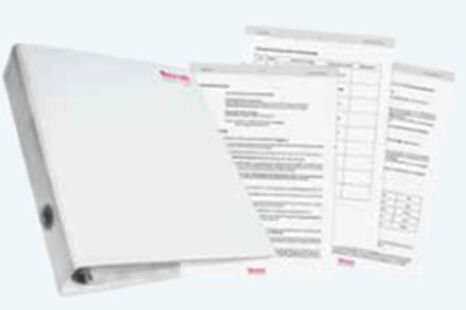Project handbooks: Proportional hydraulics - Continuous control valve

This instructor’s manual is for instructors and trainers of continuous valve technology. It describes projects specifically oriented towards practical examples from electrohydraulic control system technology. Students must have basic knowledge of hydraulics and electricity. Note that the project results documented in this manual are generally intended to serve as a rough guide for instructors and trainers. We recommend starting the projects from 01. Before carrying out the projects, the hydraulics fundamentals experiments should have been conducted.
The content and objectives of this study topic are to familiarise the student with the use of a proportional directional control valve and a proportional pressure valve and the associated setpoint generator. Through successful completion of the practical exercises, the students will acquire knowledge of the function and effect of the most important components and basic circuits of continuous valve technology. This provides practical hands-on training in continuous valve technology.
Exercise manuals (1x instructor’s manual and 1x student’s manual)
The exercise manuals are matched to the equipment sets. The equipment sets build on the content and knowledge acquired from the study topic “On/off hydraulics – Manual and electrical actuation (according to BIBB)”. The exercises and tasks described provide basic information and procedures. The layout is uniformly structured and explains how to perform the individual exercises step by step.
Course content
Through logically organised, practical exercises, the students will:
- Understand physical laws governing proportional valves such as pressure differential, aperture cross-sectional area and volumetric flow
- Become familiar with and apply regulatory and safety requirements
- Apply the most important symbols of proportional hydraulics and read schematic diagrams
- Become familiar with and understand the meaning and operation of target values, ramp functions and signal sequences
- Practise setting, starting up and optimising an electrohydraulic system
- Determine characteristic values and derive characteristic curves from them